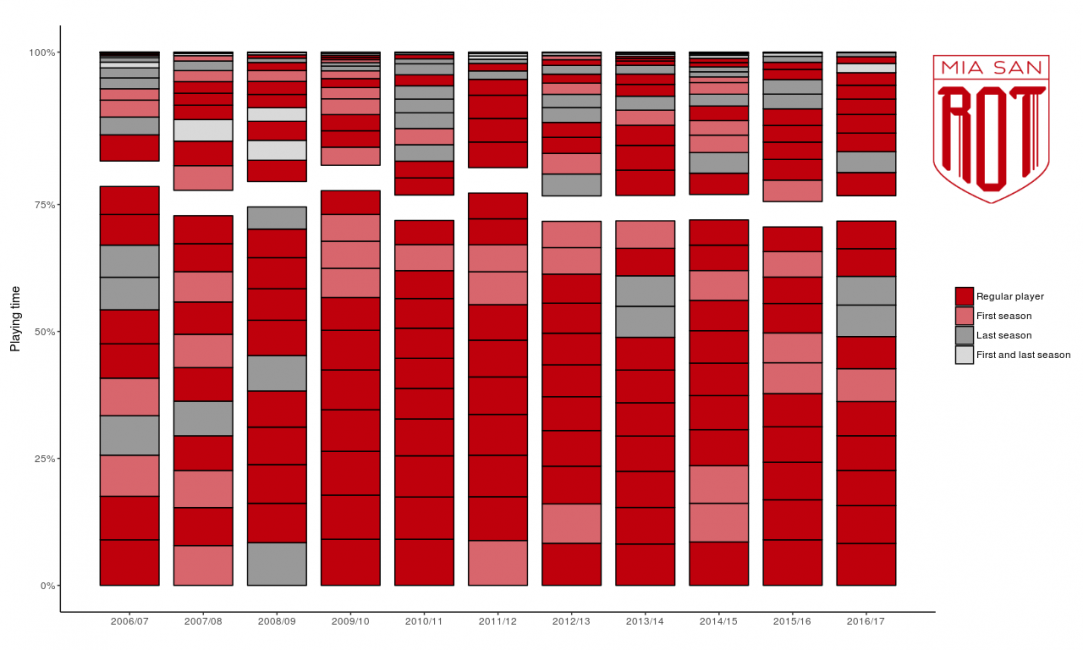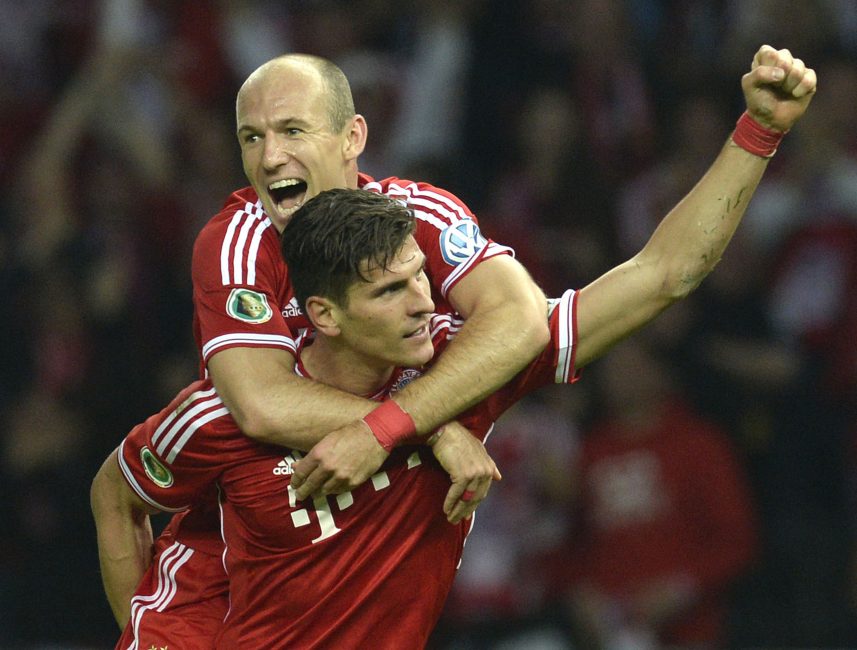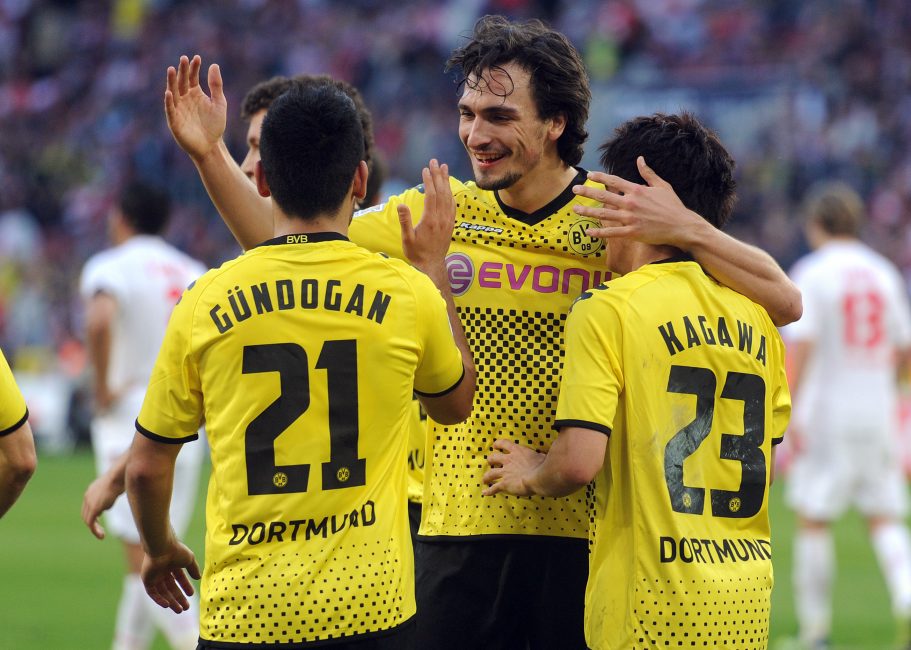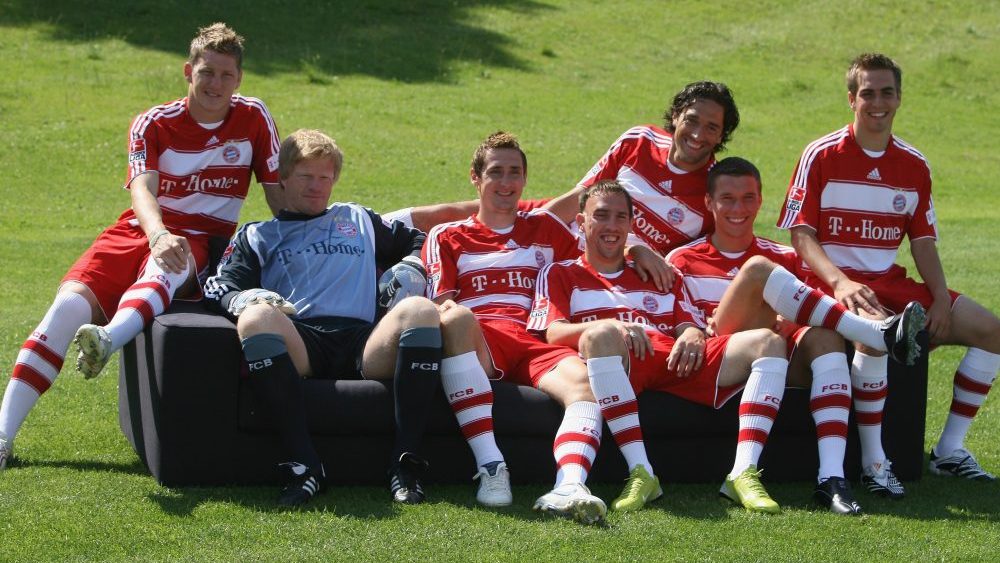Stats & Links: How has the Bayern squad changed?
How has Bayern’s squad changed over the years? Were the Reds able to strengthen their first eleven in the past transfer windows or was the step too big for the new signings? Additionally, we’re also going to examine if FC Bayern only sell players they actually want to sell.
Only Lúcio left but a lot of new faces
To get to the bottom of this question the game time of individual players per Bundesliga season were evaluated. Players are sorted by game time with a small white gap for the visualisation of the eleven players with the most game time. One could say this is the regular starting eleven, however, an injury-prone player (e.g. Robben 2015/2016) would usually be part of the first eleven for big games.
Players that were new signings in the respective season are marked in light red. All players marked as dark grey played their last season in Munich and left at the end of the season. The few light grey areas are players, who played their first as well as their last season in a red-white shirt.

(Visual: Lukas)
An interactive version including the option to click on any individual player is available here (German).
Upon first viewing one will notice, that only once has a player left the team at the end of the season when he was in the top 3 of game time. In 2008/2009 Lúcio even had the most game time of any player in the squad with 2,833 minutes but the Brazilian fell out with new manager Louis van Gaal and “fled“ to Inter Milan.
Bayern countered that by signing seven players who were in the top 3 of game time in their first season: Daniel van Buyten, Zé Roberto, Luca Toni, Manuel Neuer, Dante, Robert Lewandowski and a bit of a surprise, Juan Bernat. The Italian world champion Toni and the future German world champion Neuer even led their respective team in minutes.
A year without departures key for the treble
Looking at all eleven seasons, eleven players left Munich after they were previously in the top 11 for most game time. Lahm, Alonso and Kahn retired at the end of the season. Lúcio, Pizarro, Kroos, Mandzukic and Salihamidzic transferred to an elite European club. Poldoski, Zé Roberto and Makaay went back to their roots.
This demonstrates, that FC Bayern doesn’t have to sell players, in contrast to other clubs that will be talked about later on. Instead, all players were willingly sold. Even with the two key players Kroos and Lúcio, the management had actively agreed to sell.
At the same time, one can see that before the treble year 2013, not a single player from the starting eleven was sold in the previous four years. The core of that team was the foundation for the jubilant win in Wembley.
The two duos Kroos/Mandzukic and Alonso/Lahm are particularly striking. For one, their numbers in their last Bayern season are very similar but the stories of their departures are vastly different and on the other hand, because they are the only four players from the starting eleven to be sold since 2009 – contrary to 18 new arrivals for the first eleven in the same time frame.
Bought for the starting eleven
Over the whole time frame FC Bayern signed 24 players who were key players in their first season and achieved a place in the top 11 for game time. As a matter of fact, in six out of eleven season a minimum of three new signings were integrated into the first eleven.

(Image: Christof Stache/AFP/Getty Images)
Apart from the rebuilding year 2007/2008, when Ribéry and Toni arrived, the seasons 2011/2012, one year ahead of the treble triumph and 2014/2015, Guardiola’s second season, have to be mentioned. All three seasons attest a lot of game time for new acquisitions.
One can draw the conclusion, that Bayern is able to consistently identify players who can complement the high-quality squad and even strengthen it.
The statistic is easily distorted by injuries, however. Of course the winger duo Kinsley Coman and Douglas Costa only got this many minutes because of the injuries of their competition Ribéry and Robben.
Interestingly enough, 2011/2012 is the only season in which both Robben and Ribéry featured in the top 11 for game time. In the first year after the treble both are actually out of the top 11.
A look at domestic competition
For comparison purposes we’ll take a look at the domestic competition in the past years. On the overview page, their squads are displayed in an interactive version.
The graphic for the eternal rival Borussia Dortmund looks clearly different. Despite only having to sell 15 players, who were in the top 11 for game time in the previous year, the season 2006/2007 was the last season in which Dortmund didn’t sell a player from their starting eleven.
Furthermore, in most of these years they lost key players and mostly against the will of the club. The worst summer for The Black and Yellows was definitely the transfer window in 2016 losing three key players in Hummels, Mkhitaryan and Gündogan after “Aki” Watzke repeatedly denied their sales. Before those three, Götze, Sahin, Kagawa and Lewandowski had left the club to join international elite clubs.

(Image: Patrik Stollarz/AFP/Getty Images)
One who sells a lot of players from the starting eleven has to buy a lot of players. A total of 26 new signings for BVB successfully made the jump to the starting eleven. The 2007/2008 season was also a rebuilding year for Borussia with six transfers moving into the top 11.
The much shorter half-life period of individual players is very interesting as well. Gündogan and Lewandowski left the club after only four season. Dembélé and Petric even left after one season. This case proves, that Dortmund were partially forced to sell these players.
This gets clearer once we look at their rivals from the Ruhr area – FC Schalke 04. The Royal Blues had to sell 20 players that were previously in their starting eleven. Simultaneously they bought 25 new players immediately getting into the first eleven. Schalke had it particularly difficult in 2011 and 2012 when Neuer and Raúl, two huge key players and stars, left the club.
VfL Wolfsburg had to sell 20 players, who were previously a key part of the team, too. An astonishing 33 new signings were able to get into the starting eleven. The season 2007/2008 is particularly interesting, due to the massive numbers of new players in Wolfsburg, with Madlung and Marcelinho being the only two players in the top 11 who were previously at the club. This core of fresh faces formed the foundation for the championship winning team in the following year. Fast integration definitely worked in that case.
Links of the week
Winners and Losers From Soccer’s Transfer-Deadline Day | Ryan O’Hanlon | theringer.com
StatsBomb Podcast: Deadline Day Special (talking about Swansea, Renato Sanches and Clement at 28:00 mark) | Ted Knudson & James Yorke | statsbomb.com
Ranked! The 10 best signings of the 2017 summer transfer window | Seb Stafford-Bloor | fourfourtwo.com
From excess to success: Neymar, inflation, and the price of an EPL title. | EightyFivePoints
Transfer market analysis: tracking the money (2010-2017) | Drs Raffaele Poli, Loïc Ravenel and Roger Besson | football-observatory.com
Ten intriguing transfers in the final week of the Premier League window | Michael Cox | espn.co.uk
Bayern Munich, Kurt Landauer and a defiance of the nazis | Justin Sherman | thesefootballtimes.co
Recent Miasanrot articles
FC Bayern women’s team secure first win against Essen | Jolle | Luca
“The Bayern way of life.” | Christian | Sam
Recent stats, maps and graphics
You are currently viewing a placeholder content from X. To access the actual content, click the button below. Please note that doing so will share data with third-party providers.









